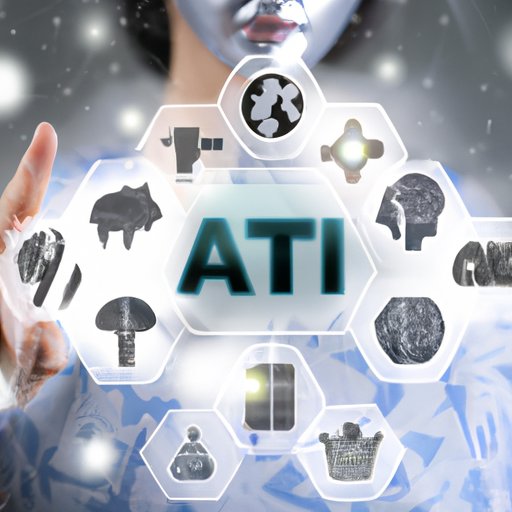Introduction
Artificial intelligence (AI) is a field of computer science that focuses on developing computer systems which can think, learn, and solve problems like humans. It encompasses a range of technologies, from machine learning algorithms to natural language processing and robotics. AI has the potential to revolutionize many aspects of our lives, from healthcare to business operations to research and innovation.
This article aims to explore the benefits of AI, focusing on its potential to improve accuracy of diagnosis and treatment, enhance efficiency in business processes, automate tedious tasks, facilitate research and innovation, enhance human-computer interaction, and increase safety and security.

Improving Accuracy of Diagnosis and Treatment
One of the most significant benefits of AI is its potential to improve accuracy of diagnosis and treatment in healthcare. AI can be used to analyze large amounts of data, such as medical images or patient records, and identify patterns that may not be obvious to human doctors. This can help doctors to make more accurate diagnoses and provide more effective treatments for their patients.
AI can also be used to automate certain tasks, such as analyzing X-rays or CT scans. By automating these tasks, AI can reduce the amount of time it takes to diagnose a patient and allow doctors to focus on providing more personalized care.
Enhancing Efficiency in Business Processes
AI can also be used to automate and streamline business processes. AI-powered robots can be used to perform mundane tasks such as packing boxes or sorting items, freeing up employees to focus on higher-value activities. AI can also be used to optimize workflows and identify areas where processes can be improved.
AI can also be used to better understand customer behavior and preferences, allowing businesses to tailor their products and services to meet their customers’ needs. This can lead to increased customer satisfaction and loyalty, as well as greater efficiency in marketing and sales.
Automating Tedious Tasks
AI can also be used to automate tedious and repetitive tasks, such as data entry or document processing. This can free up employees to focus on more meaningful tasks, as well as reducing the need for manual labor. AI can also be used to detect errors or inconsistencies in data, helping to ensure accuracy and quality.
Facilitating Research and Innovation
AI can also be used to facilitate research and innovation. AI-powered tools can help researchers to access and analyze large datasets, allowing them to uncover new insights and discoveries. AI can also be used to automate the process of testing and validating hypotheses, speeding up the research process.
AI can also be used to identify trends and patterns in data, helping to inform strategic decisions. This can enable organizations to stay ahead of the competition and remain at the cutting edge of innovation.
Enhancing Human-Computer Interaction
AI can also be used to enhance human-computer interaction. Natural language processing (NLP) can be used to enable computers to understand and respond to human speech, making it easier for people to interact with machines. AI can also be used to create more intuitive user experiences, making it easier for people to interact with websites and applications.
Increasing Safety and Security
Finally, AI can be used to increase safety and security. AI-powered tools can be used to detect threats and anomalies in real-time, helping to protect against cyber attacks and other malicious activity. AI can also be used to analyze large amounts of data, identifying suspicious behavior and allowing organizations to take proactive steps to protect their systems.
Conclusion
In conclusion, AI has the potential to revolutionize many aspects of our lives, from healthcare to business operations to research and innovation. AI can be used to improve accuracy of diagnosis and treatment, enhance efficiency in business processes, automate tedious tasks, facilitate research and innovation, enhance human-computer interaction, and increase safety and security. The possibilities are endless, and the future of AI looks very promising.
(Note: Is this article not meeting your expectations? Do you have knowledge or insights to share? Unlock new opportunities and expand your reach by joining our authors team. Click Registration to join us and share your expertise with our readers.)
